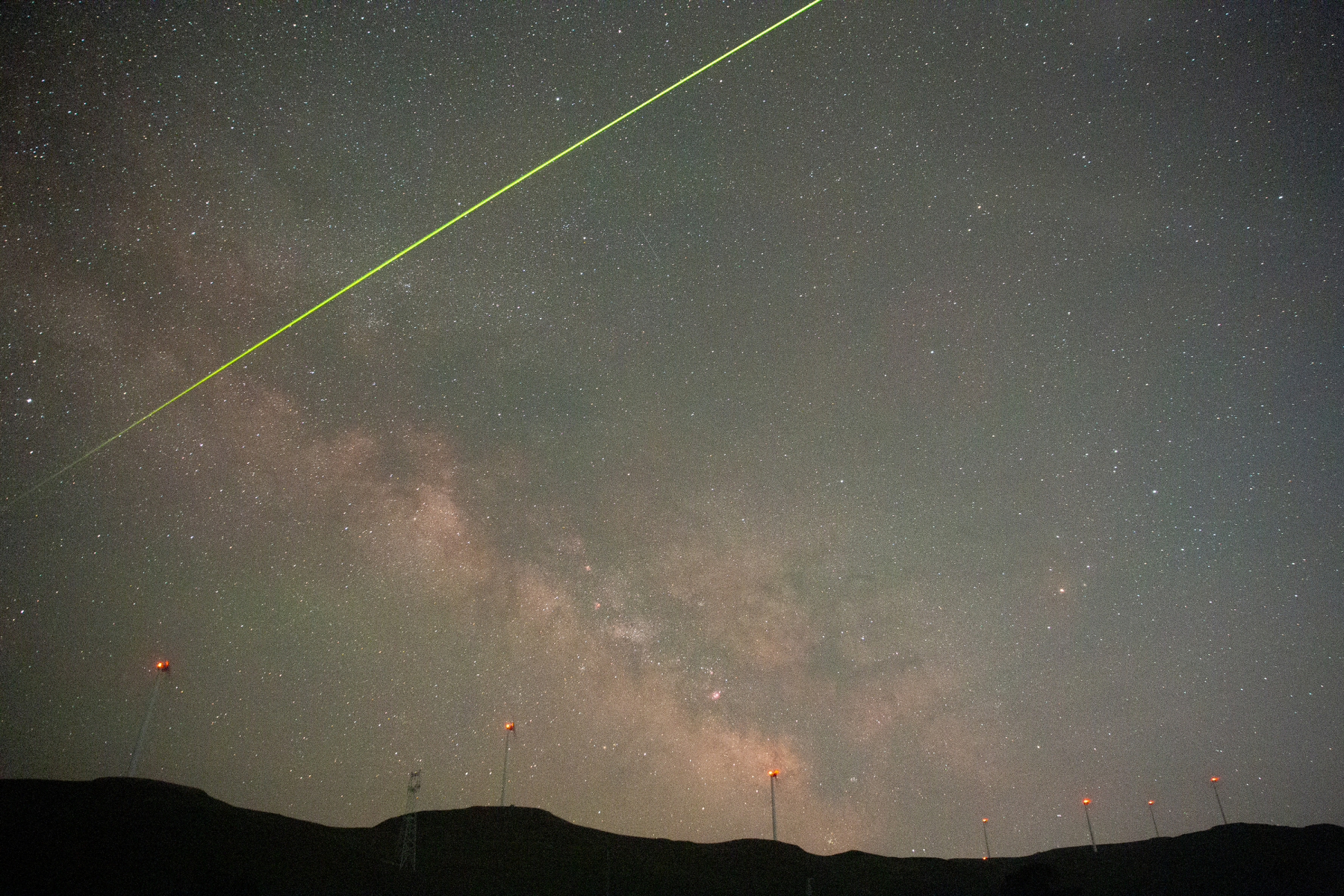 This long fireball was captured by Han Wang at 14:41 UT (22:41 CST) on 12 June 2021, from Chengde, China. Han also reports that this fireball is also recorded by amateurs at Wulanbutong County, and Mingantu County in Inner Mongolia and Beijing, the capital of China. ©Han Wang
This long fireball was captured by Han Wang at 14:41 UT (22:41 CST) on 12 June 2021, from Chengde, China. Han also reports that this fireball is also recorded by amateurs at Wulanbutong County, and Mingantu County in Inner Mongolia and Beijing, the capital of China. ©Han WangDuring this period, the moon waxes from its new phase to nearly 50% illuminated. This weekend the slender crescent moon will set not long after sunset, allowing the remainder of the night to be free of interfering moonlight. As the week progresses the moon will begin to interfere with evening meteor observing. The estimated total hourly meteor rates for evening observers this week is near 3 as seen from mid-northern latitudes (45N) and 3 as seen from tropical southern locations (25S). For morning observers, the estimated total hourly rates should be near 10 as seen from mid-northern latitudes (45N) and 12 as seen from tropical southern locations (25S). The actual rates will also depend on factors such as personal light and motion perception, local weather conditions, alertness, and experience in watching meteor activity. Note that the hourly rates listed below are estimates as viewed from dark sky sites away from urban light sources. Observers viewing from urban areas will see less activity as only the brighter meteors will be visible from such locations.
The radiant (the area of the sky where meteors appear to shoot from) positions and rates listed below are exact for Saturday night/Sunday morning July 10/11. These positions do not change greatly day to day so the listed coordinates may be used during this entire period. Most star atlases (available at science stores and planetariums) will provide maps with grid lines of the celestial coordinates so that you may find out exactly where these positions are located in the sky. A planisphere or computer planetarium program is also useful in showing the sky at any time of night on any date of the year. Activity from each radiant is best seen when it is positioned highest in the sky, either due north or south along the meridian, depending on your latitude. It must be remembered that meteor activity is rarely seen at the radiant position. Rather they shoot outwards from the radiant, so it is best to center your field of view so that the radiant lies at the edge and not the center. Viewing there will allow you to easily trace the path of each meteor back to the radiant (if it is a shower member) or in another direction if it is sporadic. Meteor activity is not seen from radiants that are located far below the horizon. The positions below are listed in a west to east manner in order of right ascension (celestial longitude). The positions listed first are located further west therefore are accessible earlier in the night while those listed further down the list rise later in the night.
These sources of meteoric activity are expected to be active this week.
.
The alpha Capricornids (CAP) are active from July 3 through August 15, peaking on July 30th. The radiant is currently located at 19:20 (290) -15. This position lies in northwestern Sagittarius, 3 degrees north of the 4th magnitude star known as Rho1 Sagittarii. Current rates are expected to be less than 1 per hour as seen from the Northern Hemisphere and near 1 per hour as seen from south of the equator. These meteors are best seen near 0100 local summer time (LST), when the radiant lies highest in the sky. With an entry velocity of 23 km/sec., the average meteor from this source would be of slow velocity.
The center of the large Anthelion (ANT) radiant is currently located at 20:04 (301) -20. This position lies on the Sagittarius/Capricornus border, 7 degrees southwest of the 3rd magnitude star known as Dabih (beta Capricornii Aa). Due to the large size of this radiant, Anthelion activity may also appear from western Capricornus as well as Sagittarius. This radiant is best placed near 0200 LST, when it lies on the meridian and is located highest in the sky. Rates at this time should be near 2 per hour as seen from the Northern Hemisphere and 3 per hour as seen from south of the equator. With an entry velocity of 30 km/sec., the average Anthelion meteor would be of slow velocity.
The Southern Delta Aquariids (SDA) are now active from a radiant located at 21:40 (325) -19. This position is located in eastern Capricornus, 2 degrees south of the 3rd magnitude star known as Nashira (gamma Capricorni). Maximum activity is expected on July 30th. Current hourly rates will be less than 1 per hour. The radiant rises near 22:00 LST but is best placed near 0300 LST, when it lies highest in the sky. With an entry velocity of 41 km/sec., most activity from this radiant would be of average velocities.
The Piscids Austrinids (PAU) are an obscure shower, not well seen from the northern hemisphere. Recent studies by the IMO Video Network shows little activity. Other studies have indicated that this shower is active later than previously thought. IMO studies show that the activity period is July 15 to August 10, with maximum occurring on July 29th. Using these parameters, the current position of the radiant would be 21:44 (326) -35. This area of the sky is located in southwestern Piscis Austrinis, 1 degree south of the spot occupied by the 4th magnitude star known as iota Piscis Austrini. This position is also 3 degrees northwest of the brighter star known as Aldhanab (gamma Gruis). The radiant is best placed near 03:00 LST, when it lies highest in the sky. Current hourly rates should be less than 1 no matter your location. With an entry velocity of 35km/sec., most activity from this radiant would be of medium velocities.
The July Pegasids (JPE) are active from July 4-17, with maximum activity occurring on July 10th. The radiant is currently located at 23:13 (348) +11. This area of the sky is located in southern Pegasus, 4 degrees southeast of the 2nd magnitude star known as Markab (alpha Pegasi). This radiant is best placed during the last dark hour prior to dawn. Rates are expected to be near 1 per hour this week no matter your location. With an entry velocity of 64 km/sec., the average meteor from this source would be of swift velocity.
The first Perseids (PER) of the year should be sighted mid-week from a radiant located at 00:39 (010) +49. This position is not in Perseus, rather it lies in northern Andromeda, 11 degrees south of the 2nd magnitude star known as Caph (beta Cassiopeiae). This area of the sky is best placed for viewing during the last dark hour before dawn when it lies highest in the sky. Maximum is not until August 12th so current rates are expected to be less than 1 no matter your location. With an entry velocity of 59 km/sec., the average meteor from this source would be of swift velocity.
As seen from the mid-northern hemisphere (45N) one would expect to see approximately 7 sporadic meteors per hour during the last hour before dawn as seen from rural observing sites. Evening rates would be near 2 per hour. As seen from the tropical southern latitudes (25S), morning rates would also be near 7 per hour as seen from rural observing sites and 2 per hour during the evening hours. Locations between these two extremes would see activity between the listed figures.
| SHOWER | DATE OF MAXIMUM ACTIVITY | CELESTIAL POSITION | ENTRY VELOCITY | CULMINATION | HOURLY RATE | CLASS |
| RA (RA in Deg.) DEC | Km/Sec | Local Summer Time | North-South | |||
| alpha Capricornids (CAP) | Jul 30 | 19:20 (290) -15 | 23 | 01:00 | <1 – 1 | II |
| Anthelion (ANT) | – | 20:04 (301) -20 | 30 | 02:00 | 2 – 3 | II |
| Southern Delta Aquariids (SDA) | Jul 30 | 21:40 (325) -19 | 41 | 04:00 | <1 – <1 | I |
| Piscids Austrinids (PAU) | Jul 29 | 21:44 (326) -35 | 35 | 04:00 | <1 – <1 | II |
| July Pegasids (JPE) | Jul 10 | 23:13 (348) +11 | 64 | 06:00 | 1 – 1 | II |
| Perseids (PER) | Aug 12 | 00:04 (001) +48 | 59 | 07:00 | <1 – <1 | I |


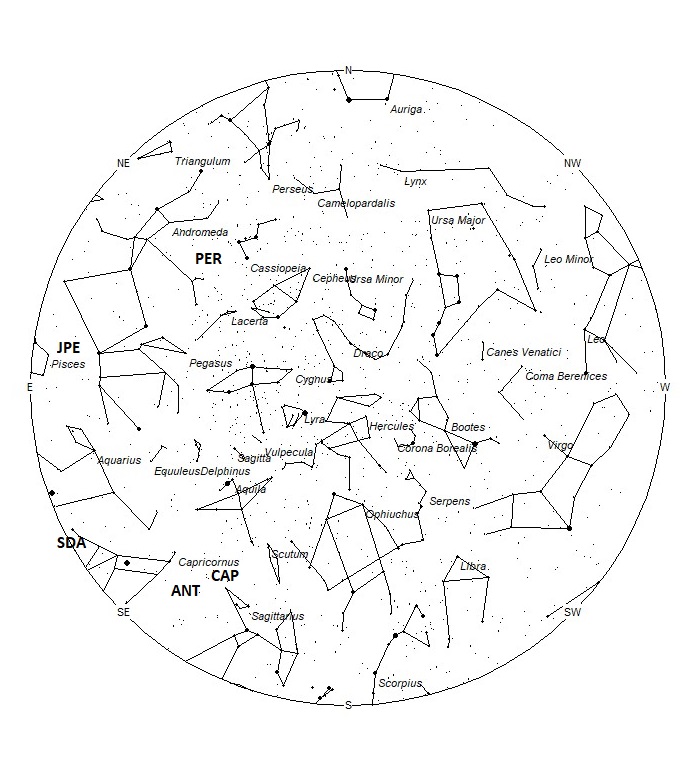
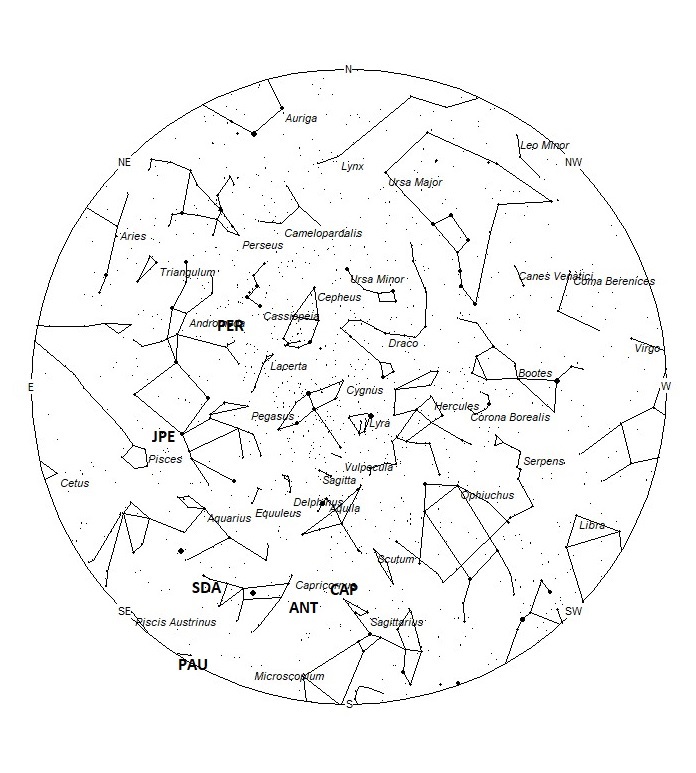
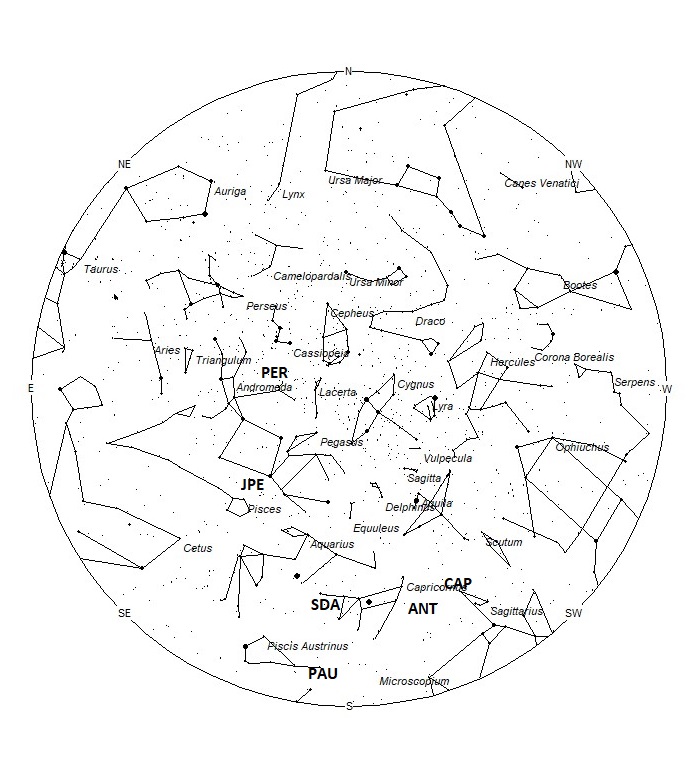

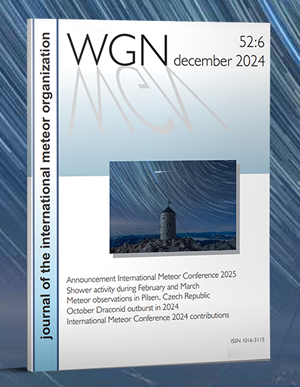
 You saw something bright and fast? Like a huge shooting star? Report it: it may be a fireball.
You saw something bright and fast? Like a huge shooting star? Report it: it may be a fireball.  You counted meteors last night? Share your results with us!
You counted meteors last night? Share your results with us!  You took a photo of a meteor or fireball? You have a screenshot of your cam? Share it with us!
You took a photo of a meteor or fireball? You have a screenshot of your cam? Share it with us!  You caught a meteor or fireball on video? Share your video with us!
You caught a meteor or fireball on video? Share your video with us!